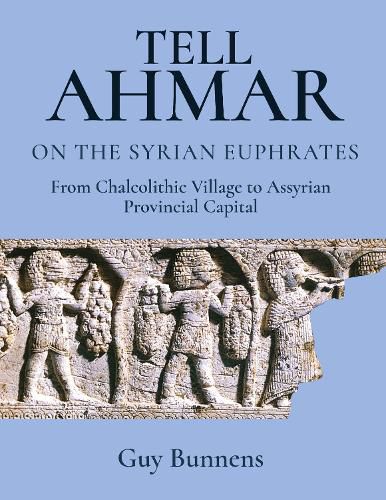Readings Newsletter
Become a Readings Member to make your shopping experience even easier.
Sign in or sign up for free!
You’re not far away from qualifying for FREE standard shipping within Australia
You’ve qualified for FREE standard shipping within Australia
The cart is loading…






Tell Ahmar - also known as Masuwari, Til Barsib and Kar-Shalmaneser in the first millennium BCE - was first inhabited in the sixth millennium during the Ubaid period, and progressively developed to become a regional centre, and in the eighth and seventh centuries, a provincial capital of the Assyrian empire. Remains from the third millennium (a temple and a funerary complex), the second millennium (an administrative complex and well-preserved houses) and the first millennium (an Assyrian palace and elite residences) are particularly impressive.
The book offers an archaeological and historical synthesis of the results obtained by the excavations of Francois Thureau-Dangin (1929-1931) and by the more recent excavations of the universities of Melbourne (1988-1999) and Liege (2000-2010). It presents a comprehensive and diachronic view of the evolution of the site, which, by its position on the Euphrates at an important crossroads of ancient communication routes, was at the heart of a game of cultural and political interference between Mesopotamia, the Mediterranean world and Asia Minor.
$9.00 standard shipping within Australia
FREE standard shipping within Australia for orders over $100.00
Express & International shipping calculated at checkout
Tell Ahmar - also known as Masuwari, Til Barsib and Kar-Shalmaneser in the first millennium BCE - was first inhabited in the sixth millennium during the Ubaid period, and progressively developed to become a regional centre, and in the eighth and seventh centuries, a provincial capital of the Assyrian empire. Remains from the third millennium (a temple and a funerary complex), the second millennium (an administrative complex and well-preserved houses) and the first millennium (an Assyrian palace and elite residences) are particularly impressive.
The book offers an archaeological and historical synthesis of the results obtained by the excavations of Francois Thureau-Dangin (1929-1931) and by the more recent excavations of the universities of Melbourne (1988-1999) and Liege (2000-2010). It presents a comprehensive and diachronic view of the evolution of the site, which, by its position on the Euphrates at an important crossroads of ancient communication routes, was at the heart of a game of cultural and political interference between Mesopotamia, the Mediterranean world and Asia Minor.